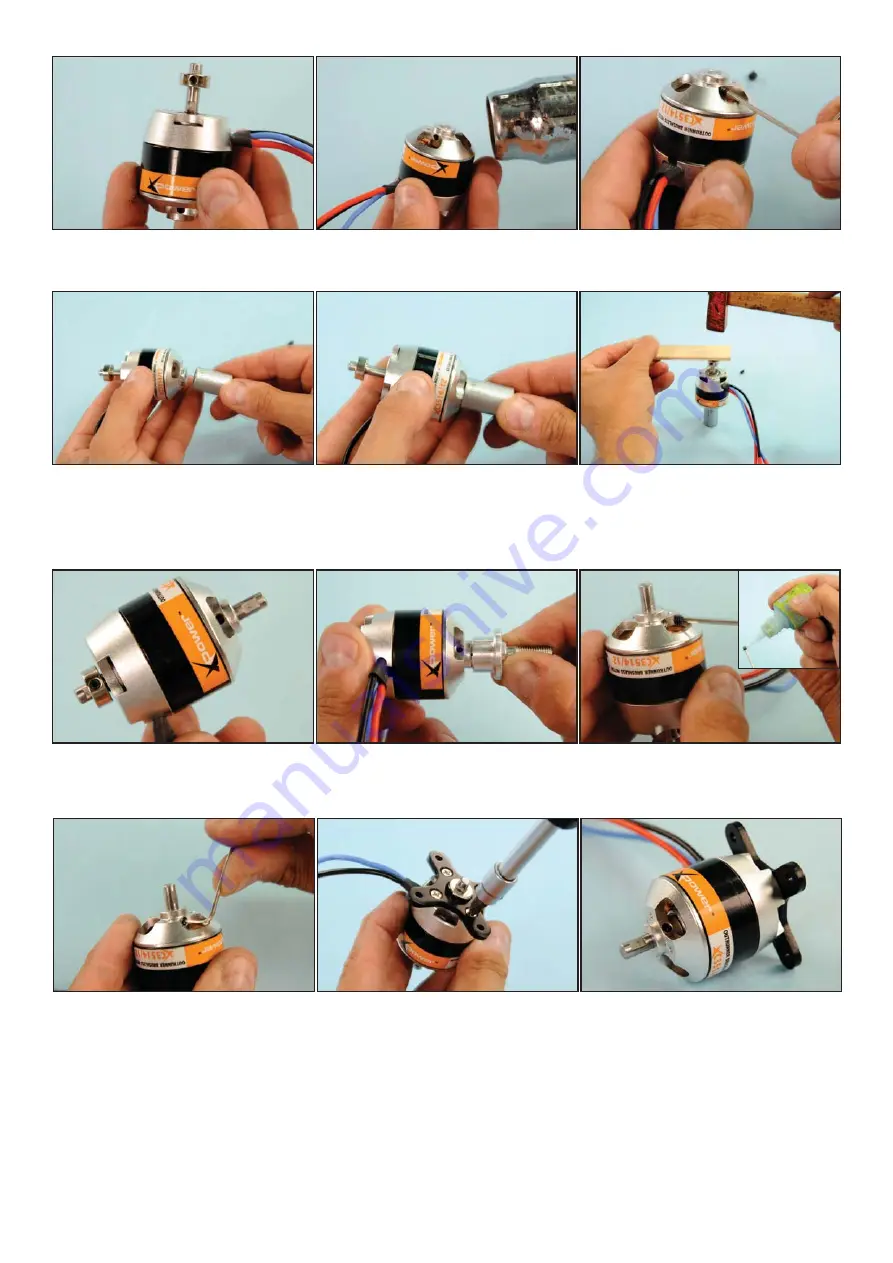
©TOPMODEL S.A.S. 2010
...c’est ce que vous devez obtenir! / ....it’s what you
must get!
z
Avec un décapeur thermique, chauffer la bague
arrière du moteur pour un desserrage facilité / With
a heat gun, heat the rear collar of the motor for a
facilitated loosening.
z
Placer la douille comme sur la photo / Locate
the socket as shown on the photo.
z
De cette manière, faire translater vers l’arrière
l’arbre moteur jusqu’au contact avec la bague / In
this manner, slip back the shaft until it touches with
the stop collar.
z
L’arbre doit sortir suffisamment à l’avant pour
que l’adaptateur d’hélice vienne en butée sur l’arbre
et sur le carter moteur en même temps / The shaft
must protube sufficiently to allow the prop adapter to
be properly mounted.
z
Remonter les vis après avoir déposer une goutte
de frein filet sur leur filetage / Reassemble the
screws after having deposit a drop of thread lock.
z
Déserrer les 2 vis avec une clé allen adaptée /
Unscrew the 2 socket screws with the convenient
allen wrench.
z
Utiliser une douille de diamètre approprié pour
recevoir le bossage arrière du moteur / Use a socket
with an appropriate diameter to receive embossing
at the rear of the motor.
z
Serrer correctement mais modéremment (ne pas
«foirer» les vis!!!) / Tighten correctly but moderately
(not spoil the screws!!!).
z
Monter sur la face arrière du moteur, le bâti radial
fourni à l’aide des 4 vis / Assemble the radial motor
mount on the flange using the 4 provided counter-
sunk head screws.
Vue du moteur équipé de son bâti radial!
View of the motor equipped with its radial mount!
z
Poser le moteur sur la douille sur l’établi / Put the
motor seated on the socket on the working bench.
z
Taper délicatement mais sèchement sur le bout
de l’arbre moteur en le protégeant avec une cale en
bois dur / With a hammer, strike gently but curtly on
the shaft end by protecting it with a piece of hard
wood.





















